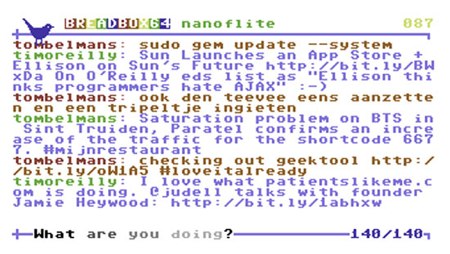The last of the Commodore 64’s shortcomings has been addressed; it finally has a Twitter client. [Johan Van den Brande] wrote BREADBOX64 for use on the C64/128. It’s running on top of the open source Contiki operating system. The hardware is an MMC Replay cartridge with an ethernet adapter. If you don’t have the hardware available, you can run it inside an emulator like VICE. Embedded below is a C128D running the program.
(P.S. all of our posts are on @hackadaydotcom)














